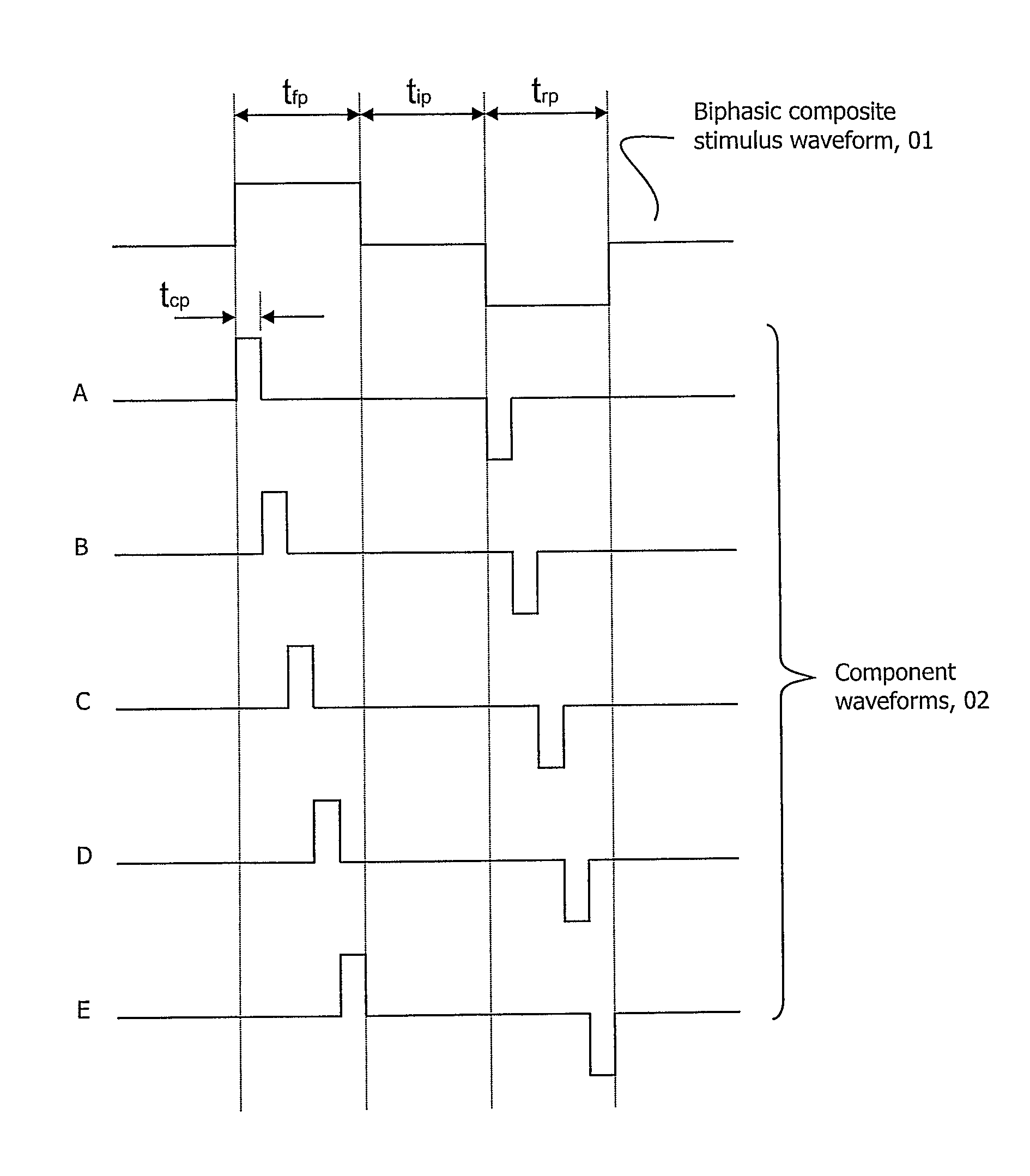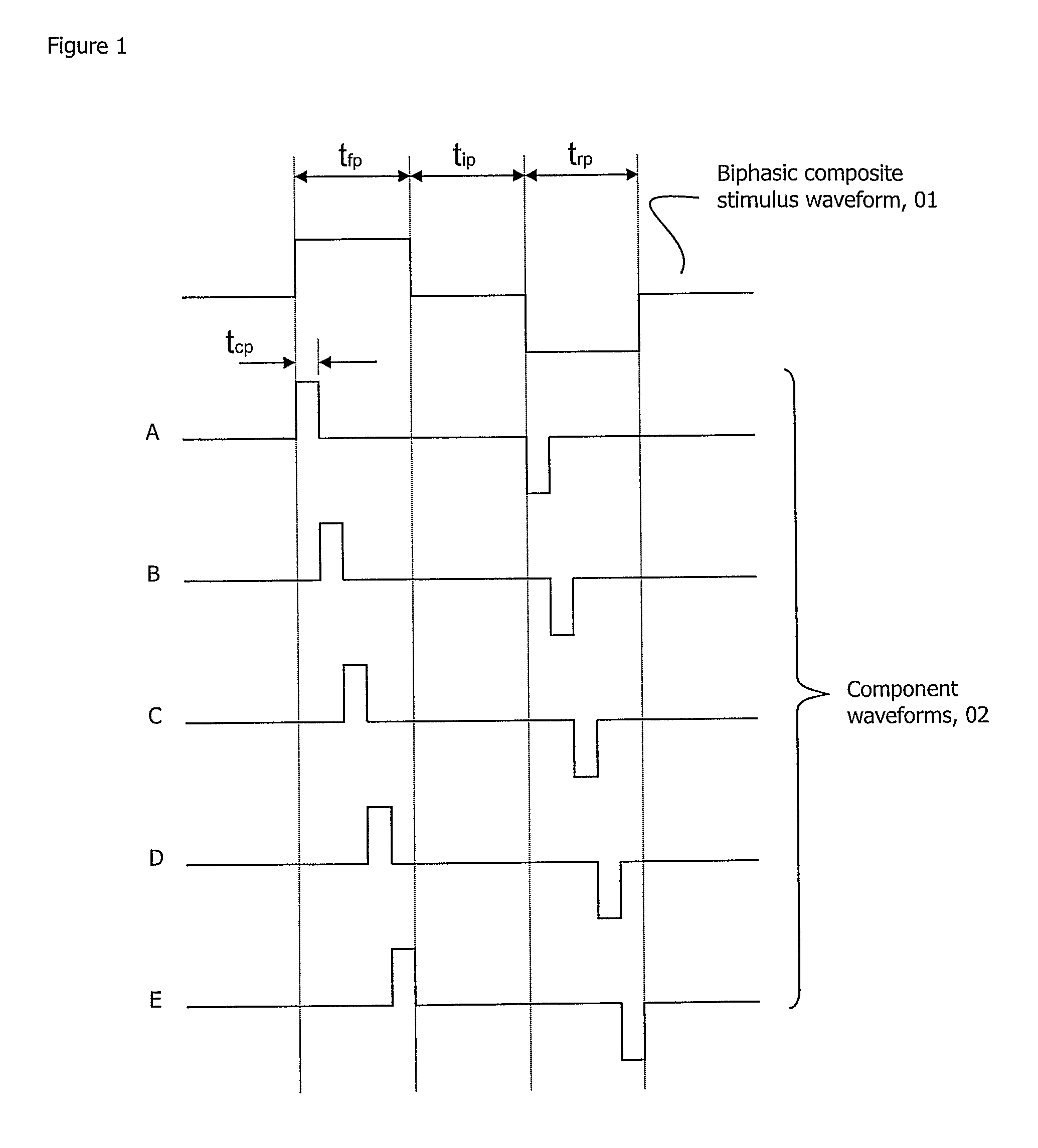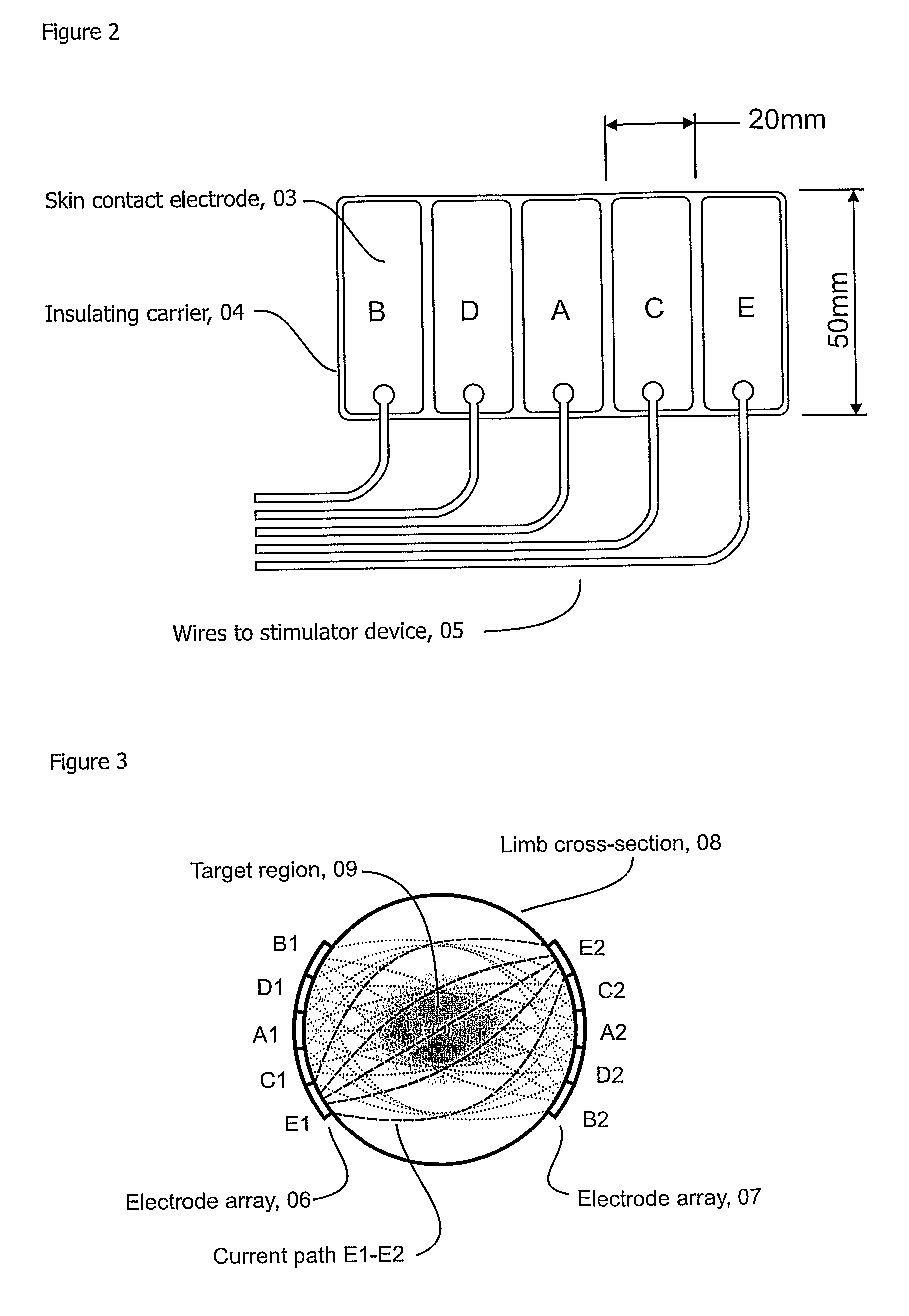Array stimulator
a stimulator and array technology, applied in the field of electric devices, can solve the problems of limited stimulation intensity, localized pain relief, and a tendency to produce a rather short-lived effect, and achieve the effects of reducing space requirements, reducing noise, and reducing nois
- Summary
- Abstract
- Description
- Claims
- Application Information
AI Technical Summary
Benefits of technology
Problems solved by technology
Method used
Image
Examples
Embodiment Construction
[0114]The invention can be illustrated by considering examples of its application to transcutaneous and implanted stimulators. The figures illustrating electrode arrays may be considered to be representative either of a clinical situation or of a corresponding mathematical model of the tissues used to derive the appropriate component waveforms. The pulses in the figures can be considered to be representative of current, voltage, charge or energy, depending on the method of control used by the stimulator device.
[0115]Referring to FIG. 1, waveform 01 is a composite waveform required to affect the behaviour of excitable tissue in, for example, a transcutaneous nerve stimulation application. The waveform in this example consists of balanced forward and reverse composite pulses, the forward pulse of duration tfp (which may typically be 50, 100, 500 or 1000 μs) and the reverse pulse of duration trp, with tfp=trp, so that the net current flowing in the tissues is zero. Net zero current flo...
PUM
 Login to View More
Login to View More Abstract
Description
Claims
Application Information
 Login to View More
Login to View More - R&D
- Intellectual Property
- Life Sciences
- Materials
- Tech Scout
- Unparalleled Data Quality
- Higher Quality Content
- 60% Fewer Hallucinations
Browse by: Latest US Patents, China's latest patents, Technical Efficacy Thesaurus, Application Domain, Technology Topic, Popular Technical Reports.
© 2025 PatSnap. All rights reserved.Legal|Privacy policy|Modern Slavery Act Transparency Statement|Sitemap|About US| Contact US: help@patsnap.com



